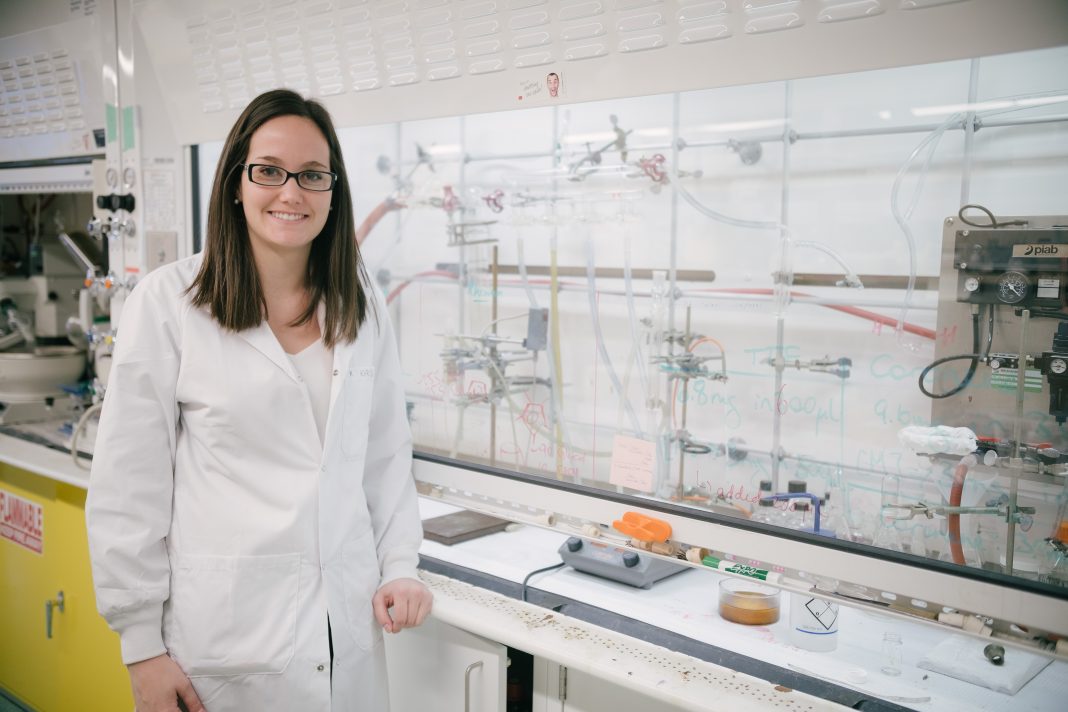Written by: Youeal Abera, News Team Member
An SFU chemistry graduate student and her team of chemists have found success in fixing the gene p53, a protein known to subdue tumours.
According to SFU News, the p53 human protein is widely referred to as “the guardian of the human genome.” The p53‘s primary function is to suppress the creation of tumours. Mutations, however, can significantly impair the function of the P53 which, in turn, leads to the rapid division of cells and the creation of tumours. Thus, the malfunction of p53 protein is correlated with the causation of “more than 50 percent of cancers.”
The press release stated that through their research, graduate student and team leader Jessica Miller, along with SFU chemistry professors Jeffrey Warren and Timothy Storr, successfully restructured the function of the p53 protein by focusing on Y220C, a mutation of the protein found in 75,000 cancer diagnoses every year.
Miller, in describing the Y220C mutation in more depth, shared with university that: “The Y220C mutation creates a cavity on the surface of the protein, which causes it to unfold and lose function.”
When discussing their team’s experimentation on the Y220C mutation, Miller elaborated by saying, “We sought to design small molecules that would sit in the exposed mutant pocket and stabilize the protein to restore its function.”
The Peak reached out to Miller via email about her team’s extensive research on the p53 protein. When asked about the incentive behind their selection of Y220C, Miller said that the p53’s tendency to produce open cavities gave the team a chance to implement stabilizing compounds.
“This mutation specifically creates an open cavity at the surface of the protein which leads to an instability, and therefore provided an exciting opportunity to design compounds that could fit nicely in and stabilize the mutant pocket.” said Miller.
In summing up their experience of working on the mutation, Miller shared: “Finding the right fit felt a bit like doing a jigsaw puzzle!”
As mentioned by SFU News, although the p53 protein is normally stabilized by a zinc ion, the Y220C mutation damages the protein by depleting this stored zinc. To counter this, Miller’s team used a bonding agent to raise the cell’s iron levels which, in turn, helped restore the function of the p53 protein. The chemistry team’s success let the p53 protein destroy cancer cells three times more efficiently than the best chemotherapy treatments.
Storr shared with SFU that their team’s next goal is to guarantee that their lead compound isn’t toxic towards an organism’s normal cells. When The Peak asked if the compound could be proven safe for humans if it’s found to be non-toxic to the cells of an animal, Miller stated, “That is a great question but a difficult one to answer. Of course, humans and mice are very different species with different metabolic pathways, and so toleration of a drug in one species doesn’t always translate to toleration in another – [the] prediction of this is quite difficult.”
However, Miller also expressed that its potential non-toxicity to mice could provide indication that the compound will be successful to the cells of humans.
“These studies can usually tell us how the drug is absorbed and distributed throughout the body, how it affects the targeted tissues, and how the body eliminates the drug,” Miller elaborated. “Toleration of a drug in mice is usually the biggest challenge prior to entering clinical trials so this would be very exciting for us.”
The medical achievement of Miller’s research team was one that took years of work, she noted. “This project took about three years to get to where we are today. The first year was spent designing the compounds based on chemical fragments that we thought could stabilize the mutant protein and then actually making them [ . . . ] During the second year, we spent a lot of time characterizing the metal-binding properties of our compounds and determining whether they could redistribute zinc to mutant p53.”
Although she expressed great excitement on their team’s newfound medical findings, Miller spoke to The Peak about the lengthy process that medical and drug discoveries typically take before they can provide assistance to the general public.
“Overall, the field of drug design and medicinal chemistry can be a lengthy process and if a drug makes it to clinical trials, it takes an average of 12 years to go from the bench to the clinic,” Miller concluded.
The research of Miller’s team, as well as their corresponding findings, can be observed within Chemistry — A European Journal.
With files from SFU News.




